Welcome guitar fans, to yet another in depth scale study & theory lesson. This time we’re looking at the mysterious Pentatonics of Melodic Minor. The Major b6 Pentatonic & The Minor b5 Pentatonic.
These are scales that most players don’t know but will add a new arsenal of exotic possibility to your playing if you can nail them down. This lesson goes deep, so warm up, plug in, & get ready!
The basic format for the pentatonics of melodic minor are still two note per string, however the fingerings and intervals will feel unconventional if you’re used to the standard major and minor pentatonics. We’re going to look at these scales on a 7 string guitar however if you don’t have a 7 string, don’t worry! You can still learn these shapes but your root notes will change.

Contents of This Lesson:
The Major b6 Pentatonic Scale:


Pentatonics of Melodic Minor: E Major b6 Pentatonic.
5 Positions of the Standard Shapes
Notes & Interval Formula
Notes: E, F#, G#, B, C
Intervals: R – 2 – 3 – 5 – b6
Here are the five basic two note per string shapes across the neck. Since this is a pentatonic scale (meaning 5 notes) there will be 5 different positions and shapes, each starting from the next note of the scale. You could consider each new pentatonic shape a ‘mode’ but this is uncommon practice for pentatonics. The major b6 pentatonic is derived from the mixolydian b6 mode of melodic minor.
Mode References
For each position we have demonstrated two diagrams. One showing the standard Pentatonic shape for 7 string guitar (above) and one showing the the additional notes from the corresponding mode reference. Each modal reference demonstrates the melodic minor mode that the pentatonics are derived from.
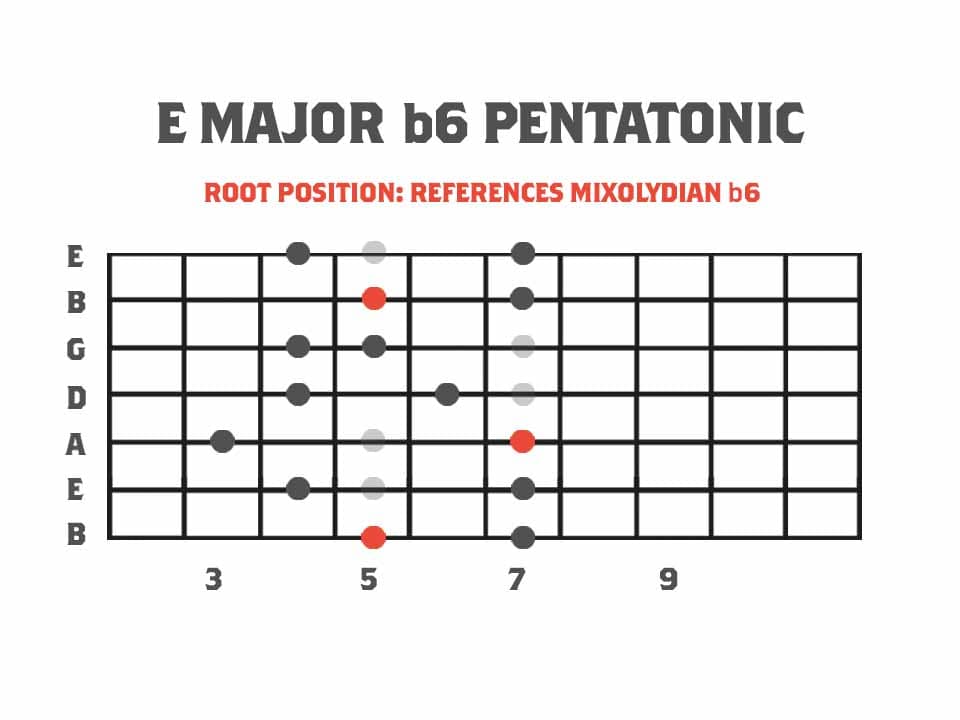
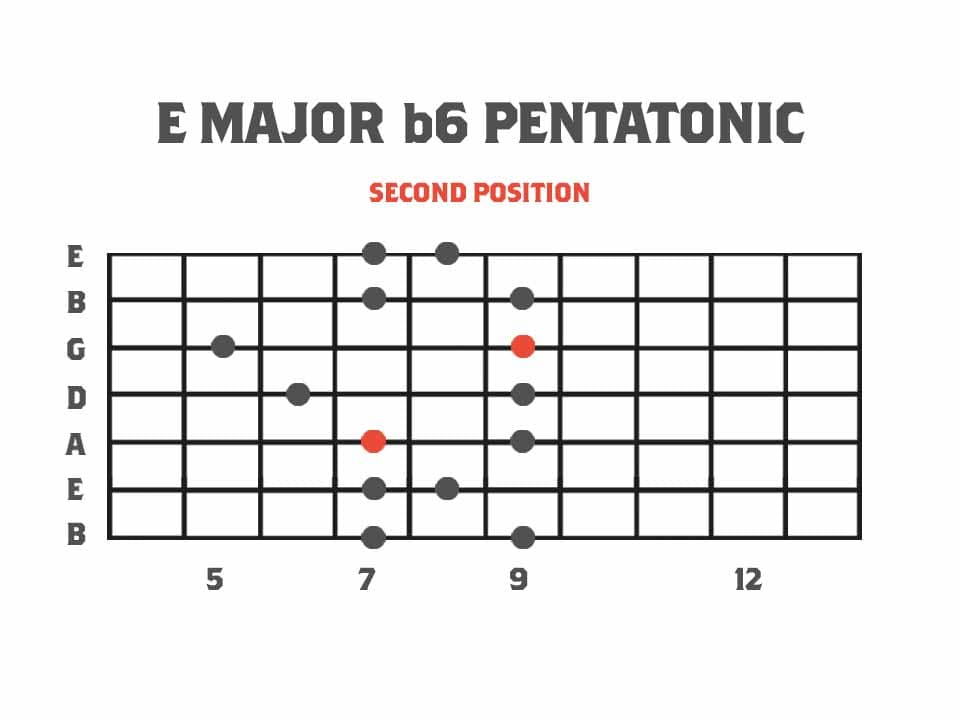


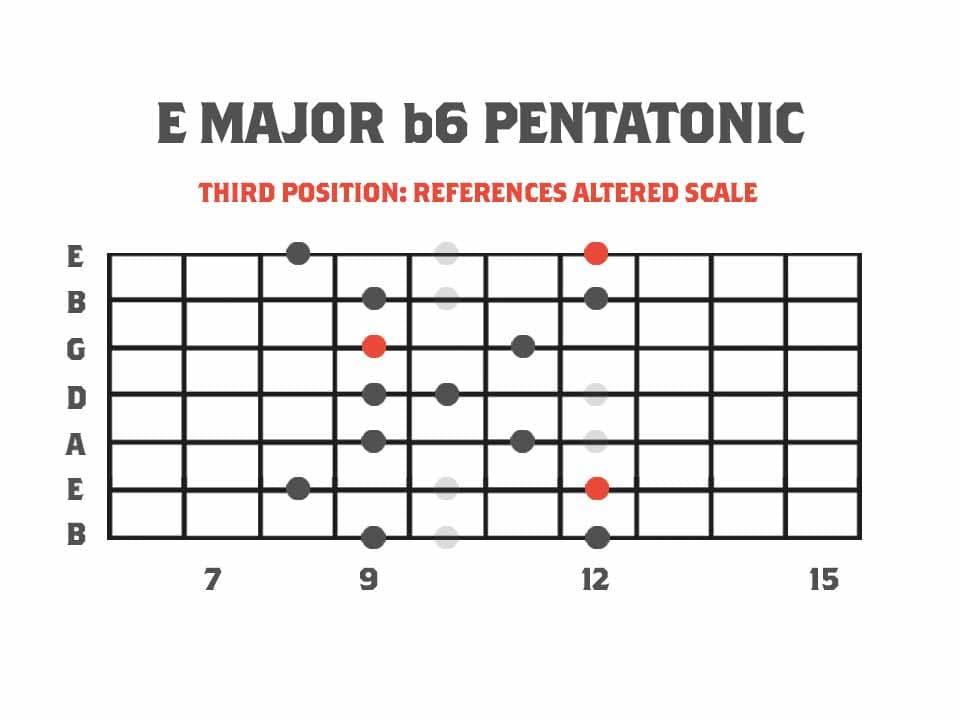
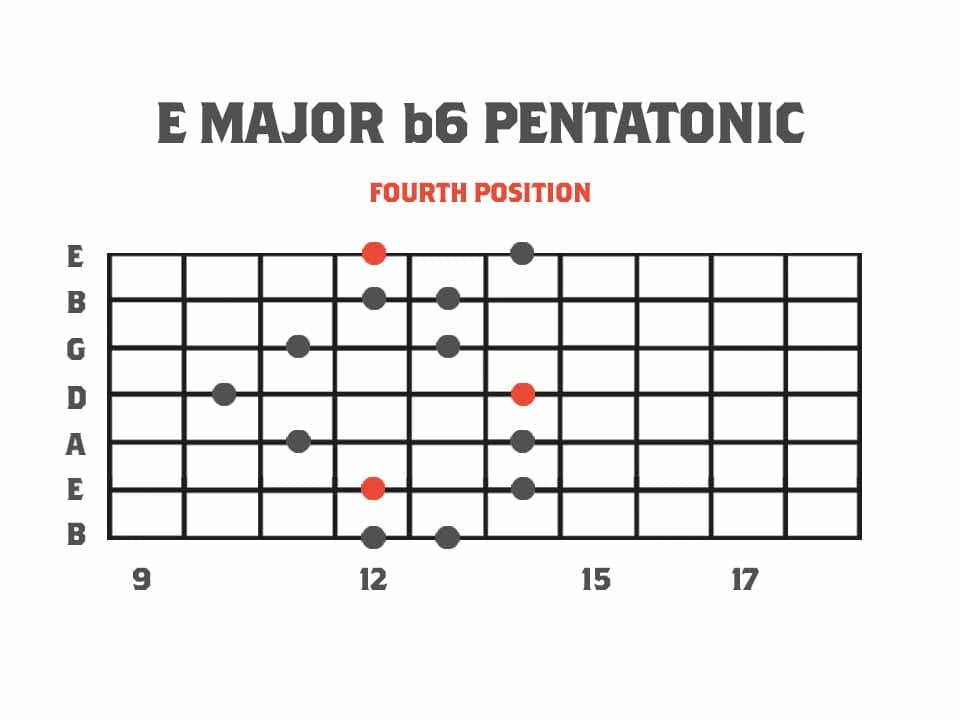
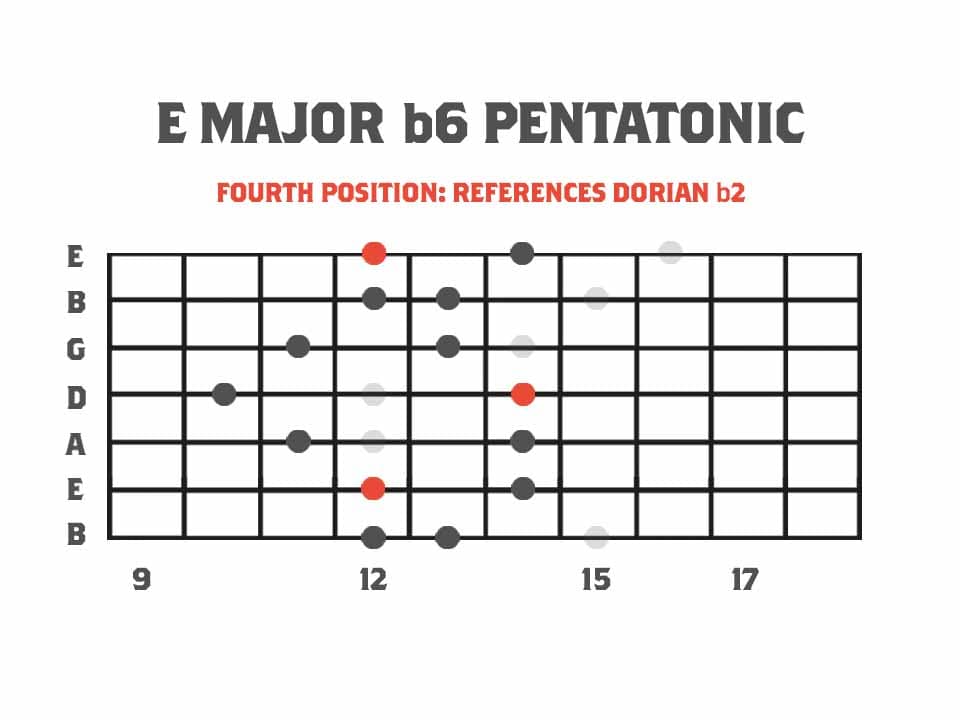
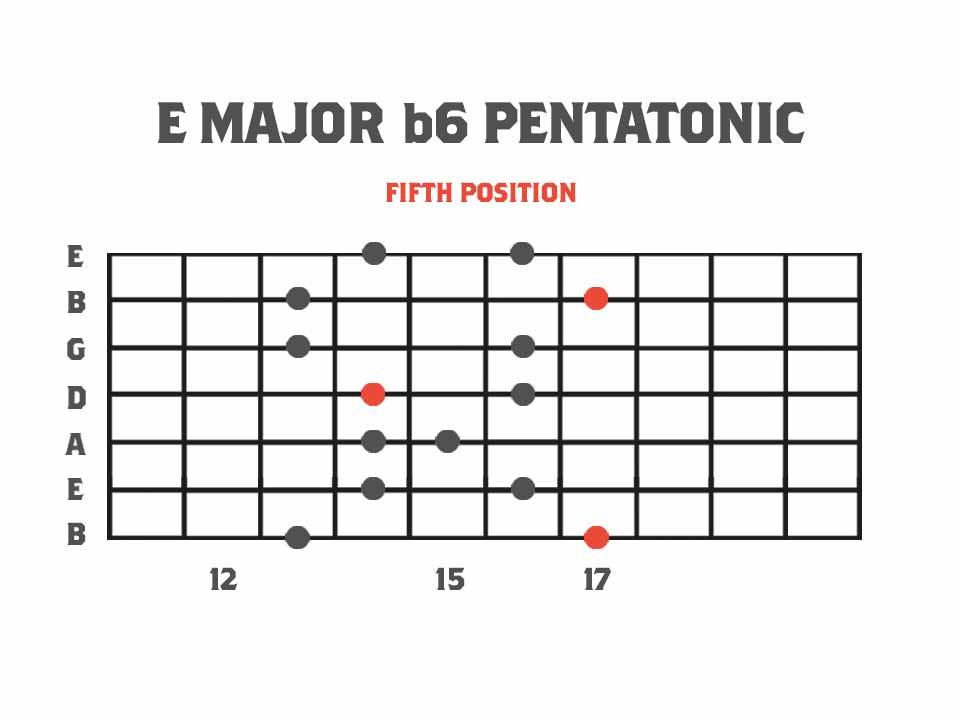
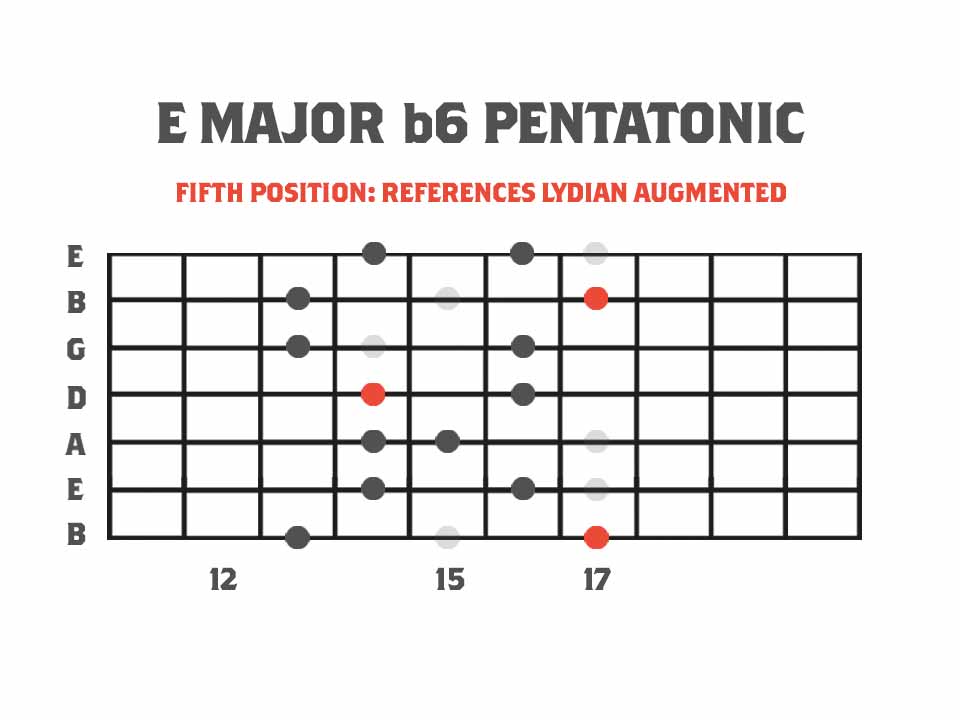


How to Use The Pentatonics of Melodic Minor: Major b6 Pentatonic
In any melodic minor key, the major b6 pentatonic is derived from the mixolydian b6 mode. This is mode number 5 of melodic minor. If we know the intervals of melodic minor we can find out which melodic minor parent key (or scale) we are in. In this example we’re using E major b6 pentatonic which is derived from the mixolydian b6 mode. We know that E is the fifth degree of A so therefore we are using A melodic minor as our basis or ‘parent’ key.
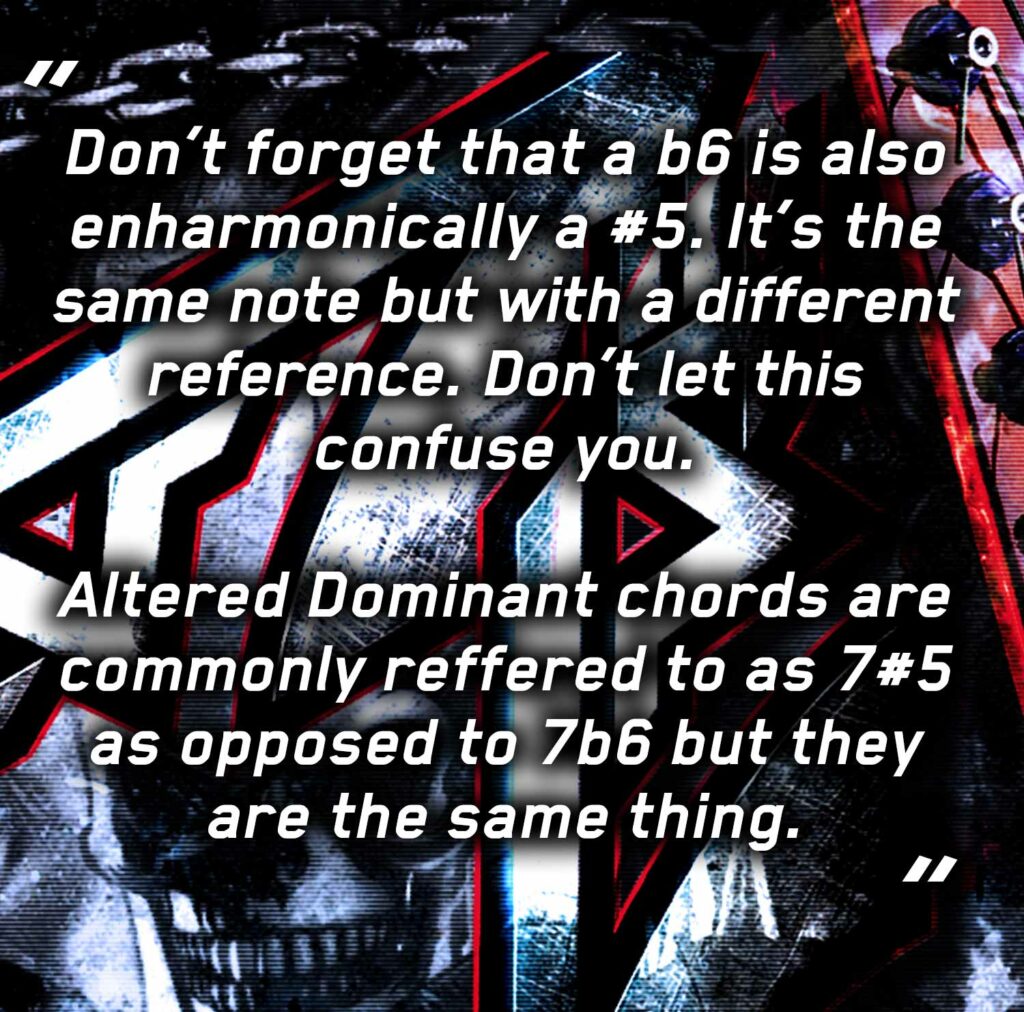
Pentatonics of Melodic Minor: Chords, Concepts & Theory
If we’re using E major b6 pentatonic to write a solo or melody, in its most basic form, we know that this scale will work on chords derived from the E mixolydian b6 mode. The major b6 pentatonic will share some or all of the notes from the chords that can be built from the mixolydian b6 mode. This lesson will teach you more about extended 7th chords and the theory behind them.
E7#5: Altered Dominant Chord
One of the most obvious choices to play this pentatonic scale over would be the dominant 7#5 chord. This contains the notes E, G#, C and D. This is the most standard choice of chord that can be built from the E mixolydian b6 mode. An altered dominant chord is essentially a dominant chord with an altered 5th.
E7#5: Altered Dominant Notes & Formula
Notes: E, G#, C, D
Intervals: R – 3 – #5 (b6) – b7
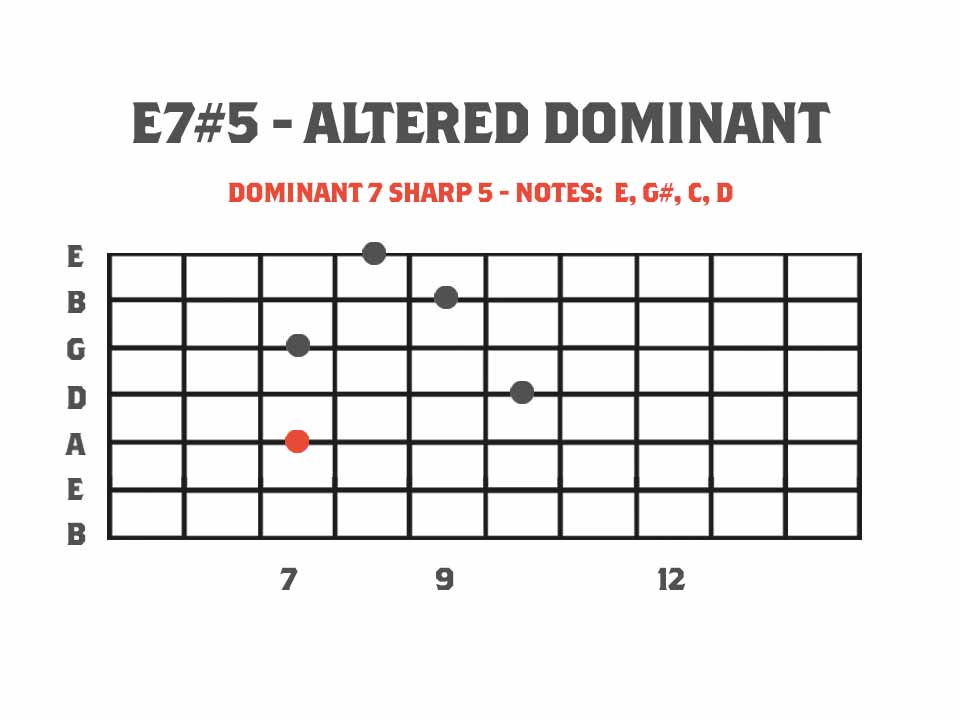
Other Chord Possibilities – Am(Maj9)
We can also use this scale over other chords that are derived from the A melodic minor scale and its modes. For example we can build Am(Maj9) from the A melodic minor scale. We know that E major b6 pentatonic will work perfectly over this.
A minor major 9th chord
Notes: A, C, G#, B
Intervals: R – b3 – 7 – 9
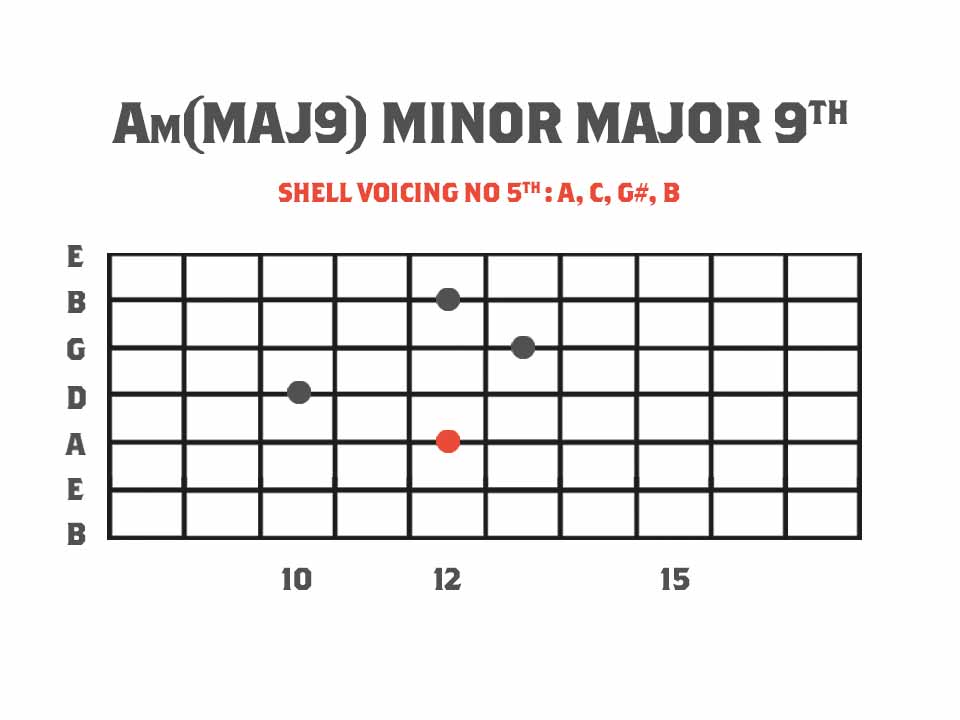
All Axe-cess Pass – Become a Strings of Rage™ Syndicate Member
If you want to learn all the other chord types for this scale and some practical chord progressions then consider becoming a Strings of Rage™ Syndicate member where you can download the full length scale study & theory book for this lesson.


Pentatonics of Melodic Minor: E Minor b5 Pentatonic.
Standard Shapes & Theory
Notes & Interval Formula
Notes: E, G, A, Bb, D
Intervals: R – b3 – 4 – b5 – b7
Here are the five basic two note per string shapes across the neck. Since this is a pentatonic scale (meaning 5 notes) there will be 5 different positions and shapes, each starting from the next note of the scale. This minor b5 pentatonic is derived from the locrian #2 mode, also known as Aeolian b5.
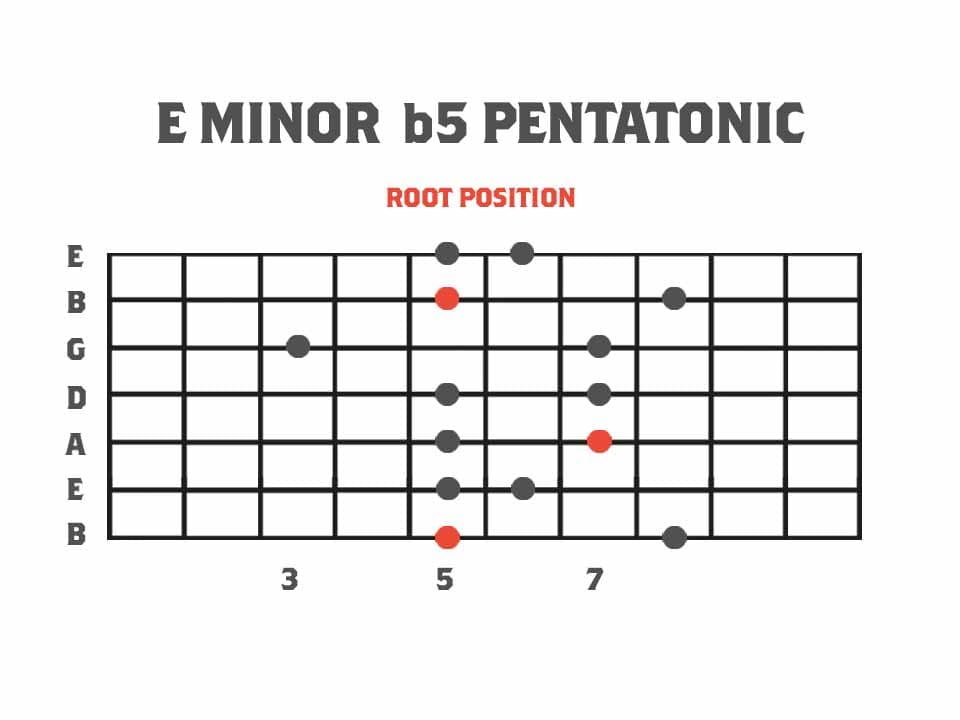

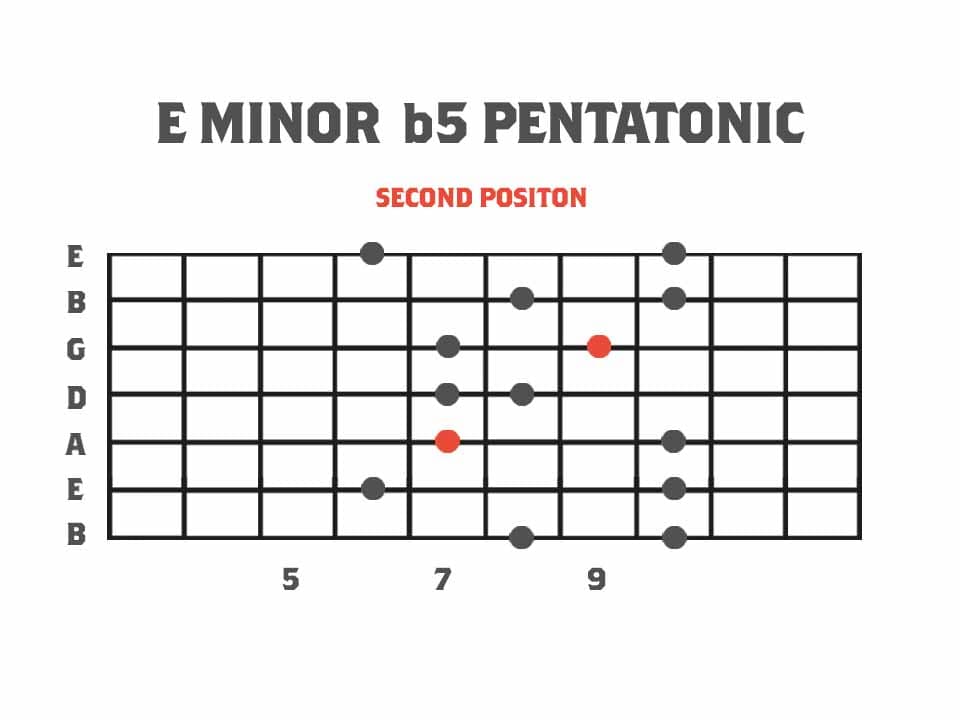
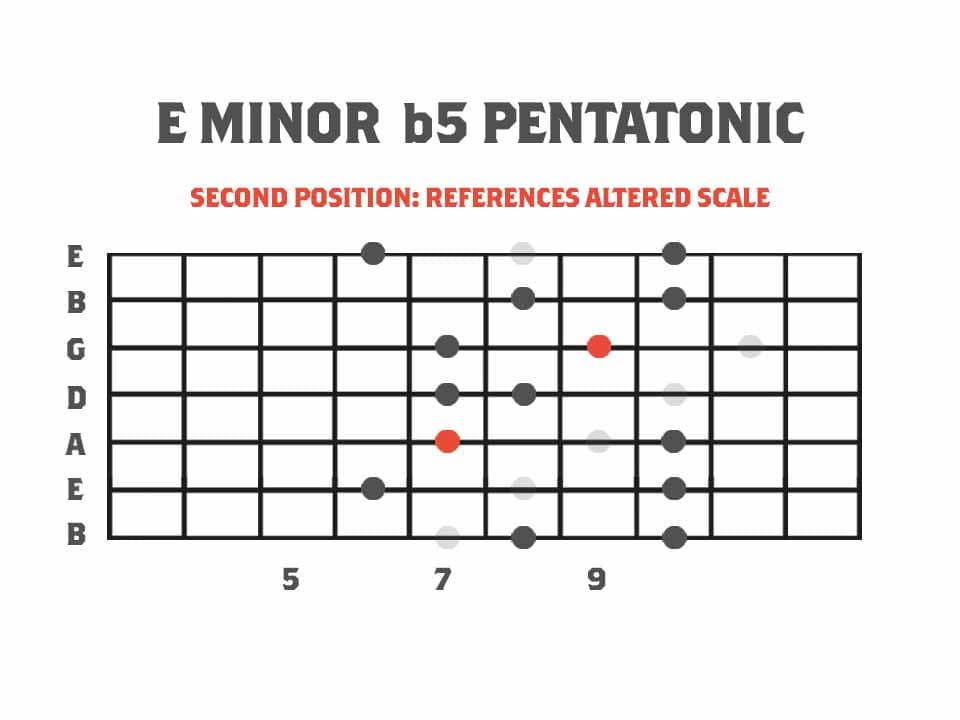
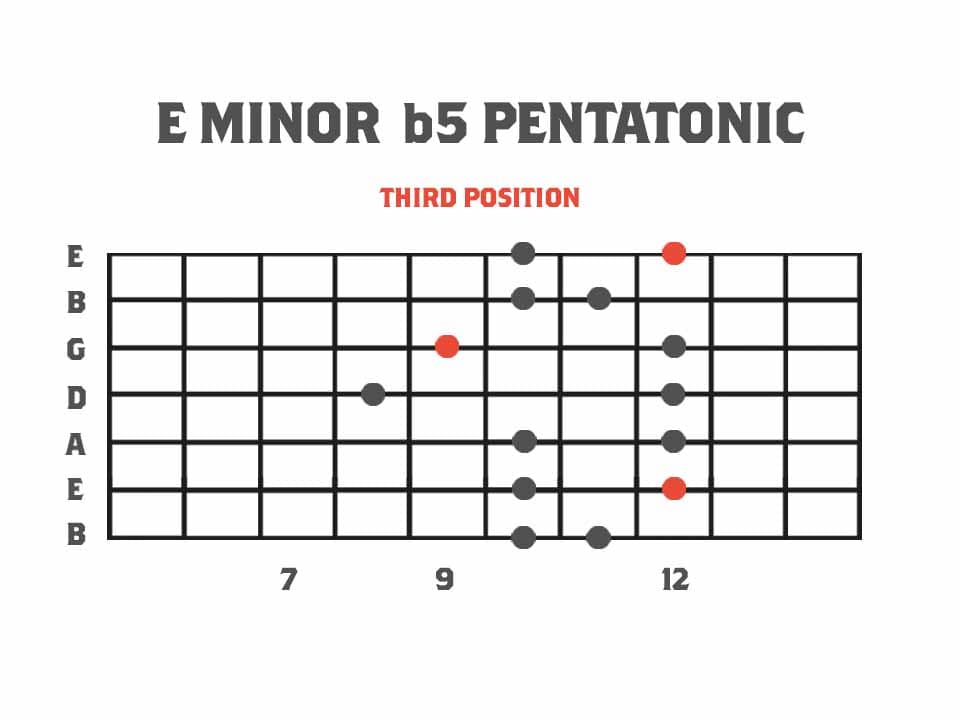
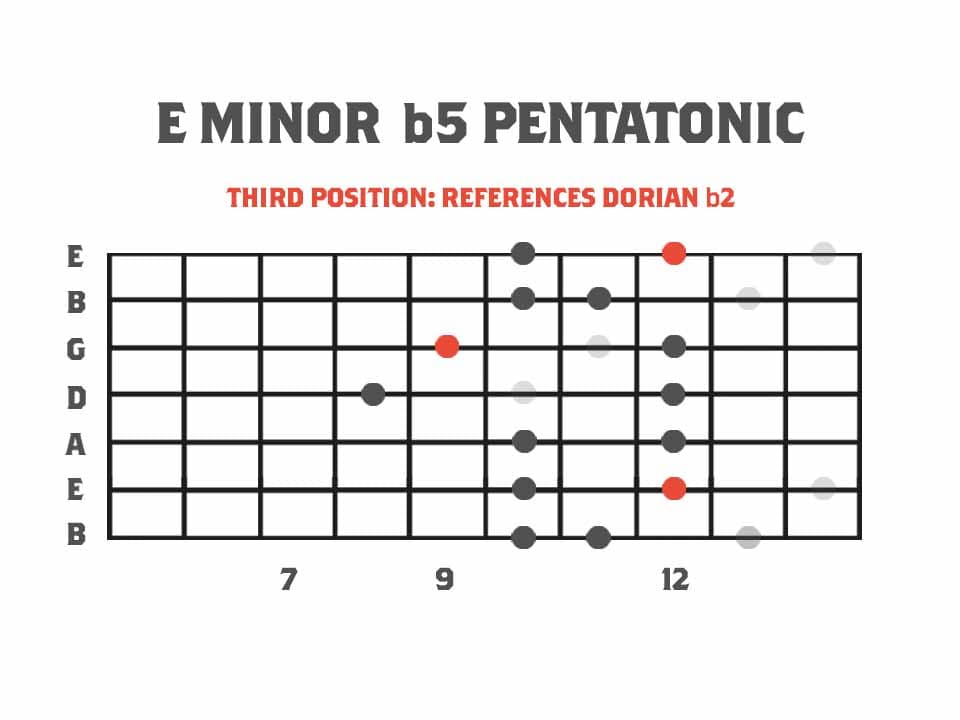






How to Use The Pentatonics of Melodic Minor: Minor b5 Pentatonic
In any melodic minor key, the minor b5 pentatonic is derived from the locrian #2 mode (also know as aeolian b5). This is mode number 6 of melodic minor. If we know the intervals of melodic minor we can find out which melodic minor key we are in. In this example we’re using E minor b5 pentatonic (derived from locrian #2 mode). We know that E is the sixth degree of G so therefore we are using G melodic minor as our basis or ‘parent’ key.
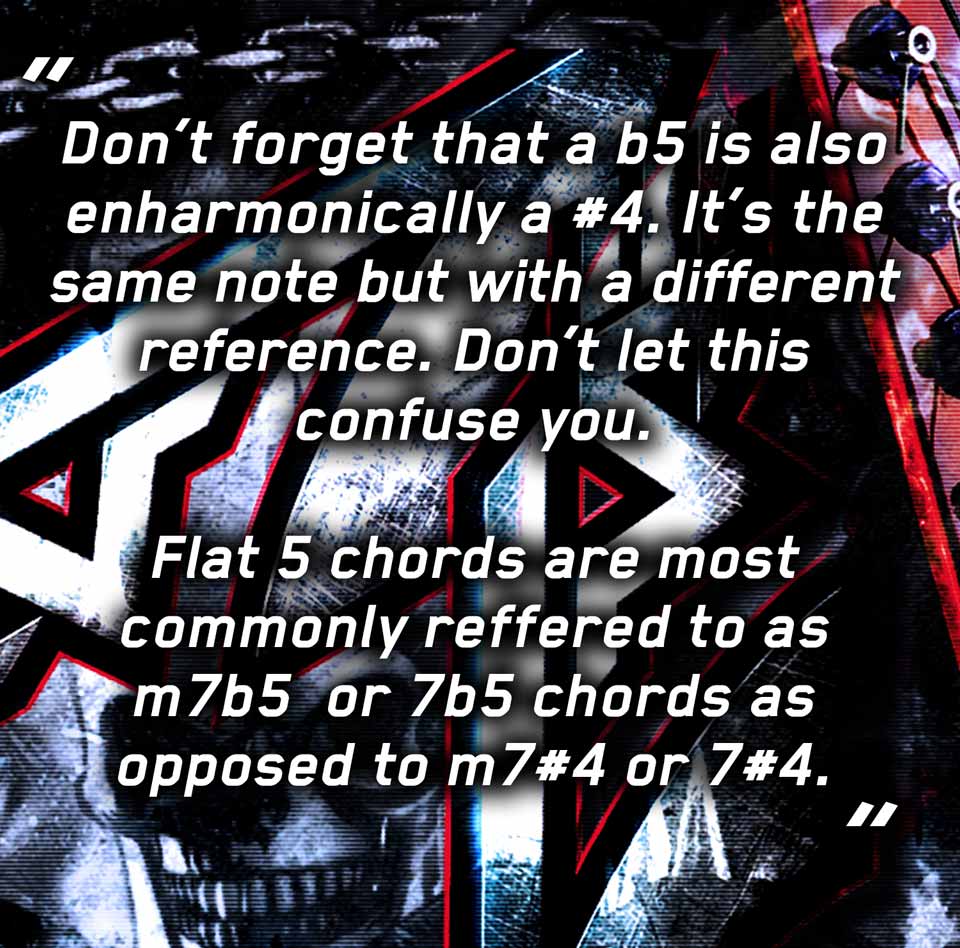
Pentatonics of Melodic Minor: Chords, Concepts & Theory
If we’re using E minor b5 pentatonic to write a solo or melody, in its most basic form, we know that this scale will work on chords derived from the E locrian b2 mode. The minor b5 pentatonic will share some or all of the notes from the chords that can be built from the locrian #2 mode. This lesson will teach you more about extended 7th chords and the theory behind them.
E Minor 7b5 Chord
One of the most obvious choices to play this pentatonic scale over would be the E minor 7b5 chord. This contains the notes E, Bb, D and G. This is the most standard choice of chord that can be built from the E locrian #2 mode. Minor 7b5 chords simply take a minor 7th chord and flatten the 5th.

E Minor 7b5 Chord:
Notes: E, G, Bb, D, G
Intervals: R – b3 -b5 – b7

Extended ways to play the Pentatonics of Melodic Minor
Here’s two different ways you can use octaves to expand your pentatonics across the neck. By learning and understanding these extended positions you’ll be able to break out of single position playing and take your pentatonic ideas across the neck.
Syndicate Members can download the full book that provides extended diagrams for each position of the melodic minor pentatonic scales.
Octaves Using a 3 String Repeat Pattern
Both of these ideas are simply repeating patterns. That’s the true beauty of using octaves for any extended scalar playing. This first idea uses three strings before hitting the octave and repeating. For all the sweep pickers and economy pickers out there, this idea lends itself very well to economy picking.
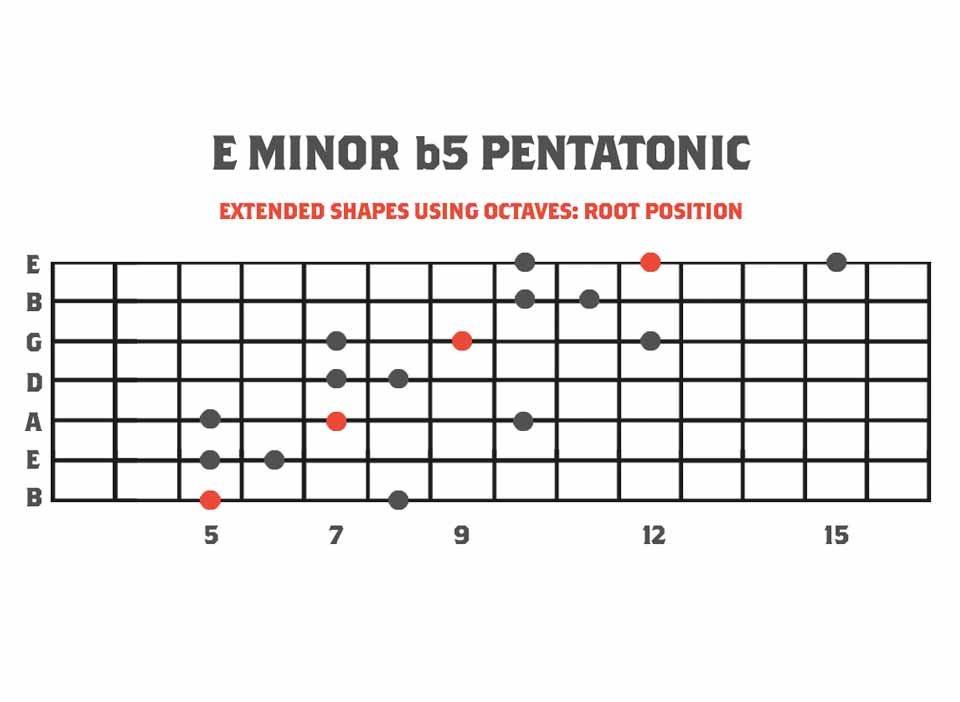
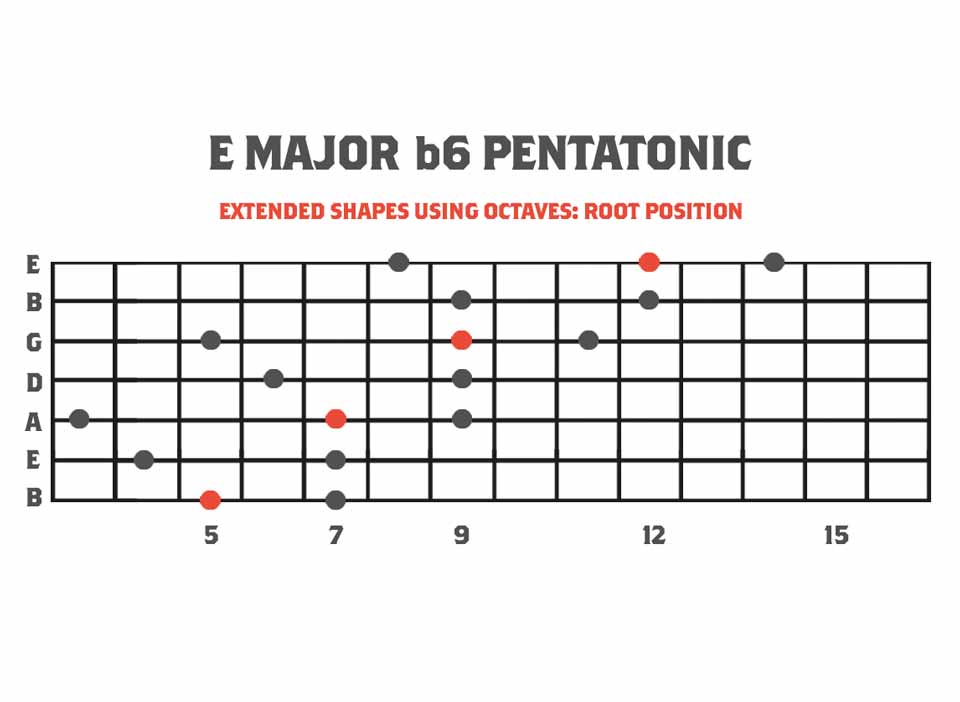
Octaves Using a 2 String Pattern
You’ll probably have noticed by now that because of interval structure there are some large stretches involved. These two string repeat pattern would require some slides and hammer ons to move between positions. If you’re clever with your fingerings, the root position major b6 pentatonic shape can be economy picked.
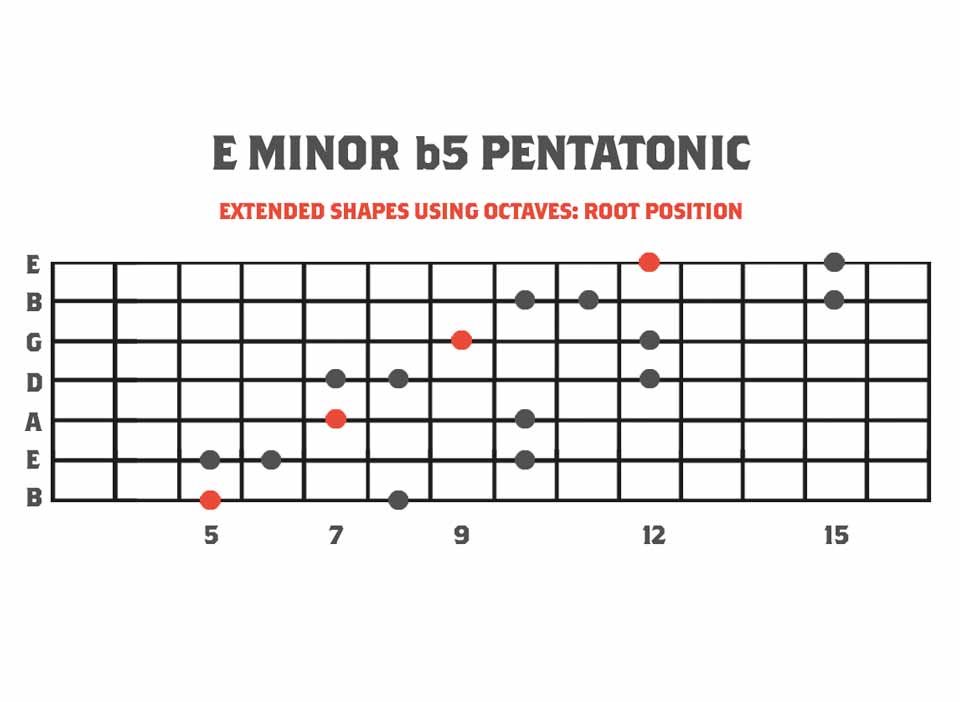
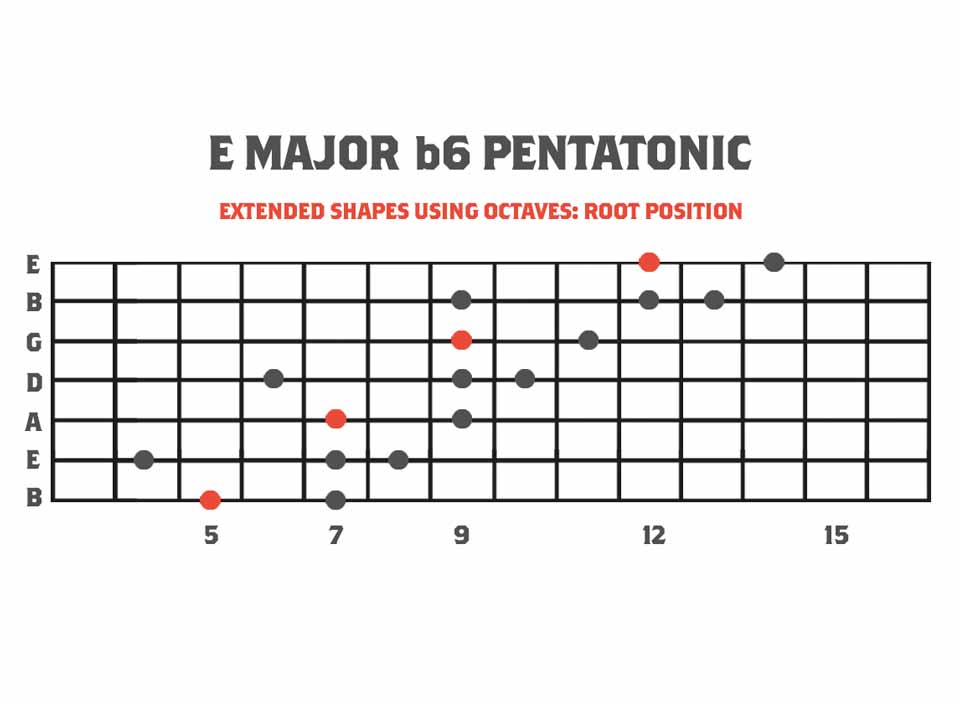
Referencing Single Positions with Extended Shapes
When you begin to move into the realms of extended shapes for any scale, especially pentatonics, its massively helpful to be able to ‘see’ and reference the standard positions. This will help you to visualise where you are on the neck at any given time.
Lets look at how to reference the standard positions for both of these extended octave shapes.
With this type of extended shape we’ll reference sets of three strings. The first three strings, B E and A, reference the root position standard shape. The next three strings A, D and G strings reference the second standard position.
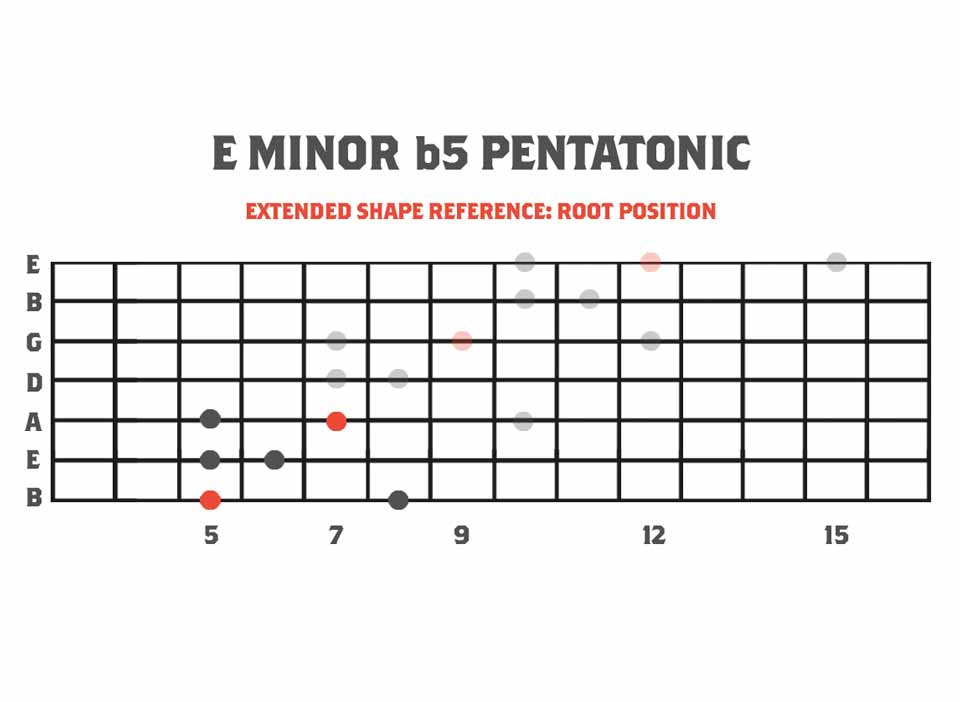
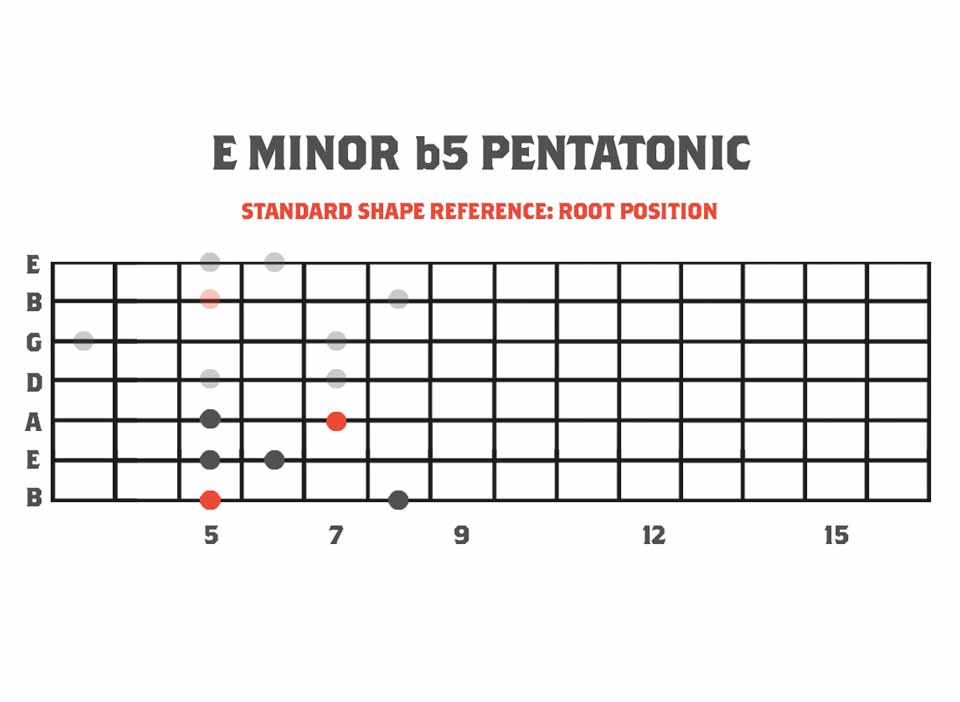
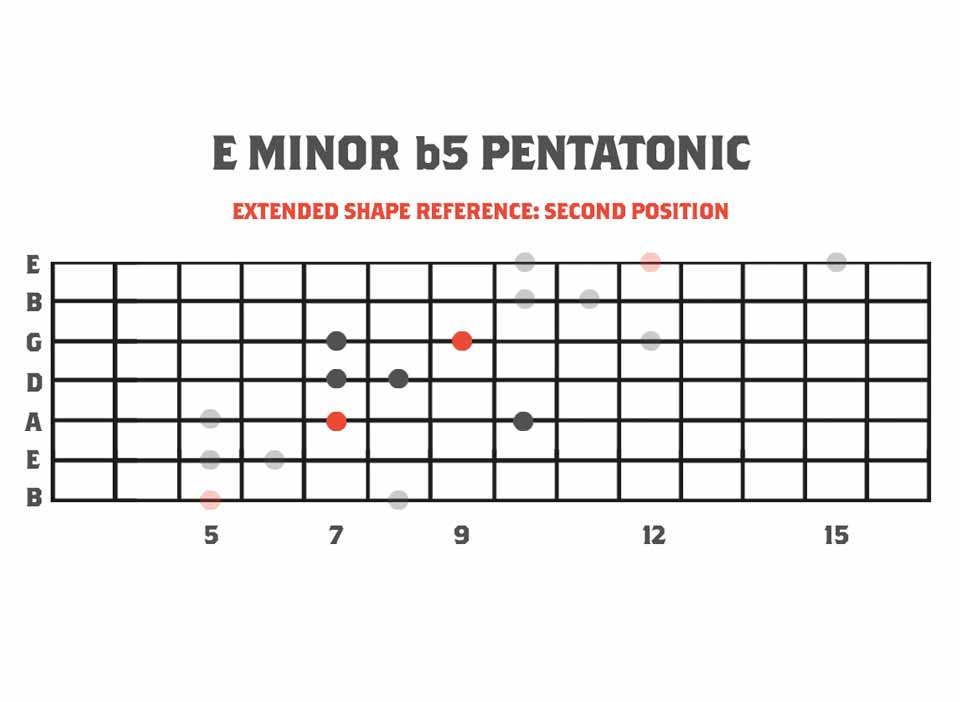
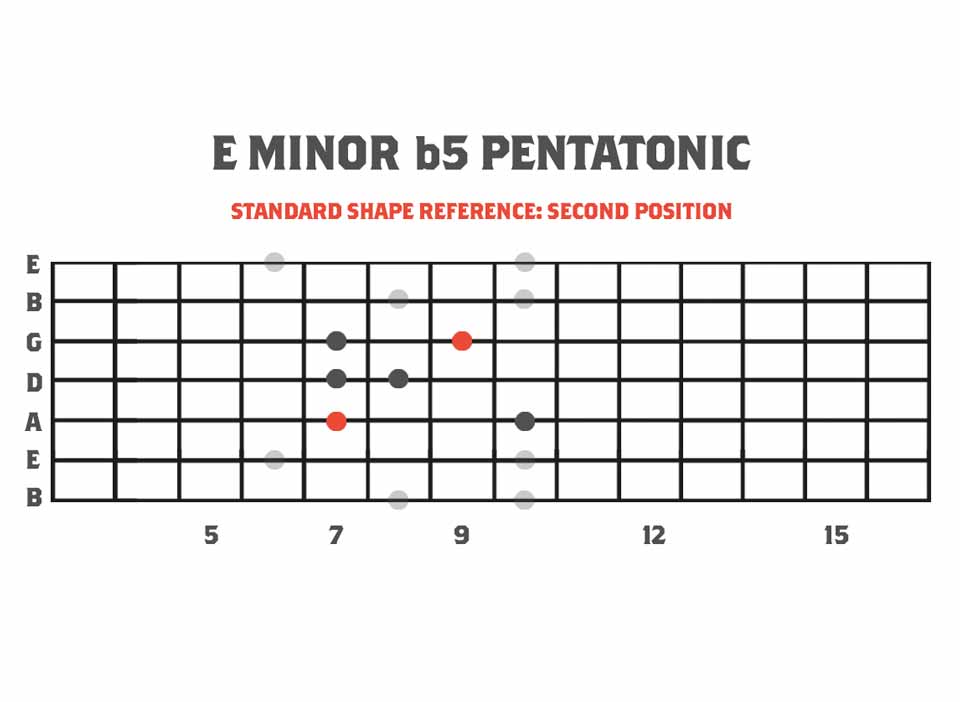
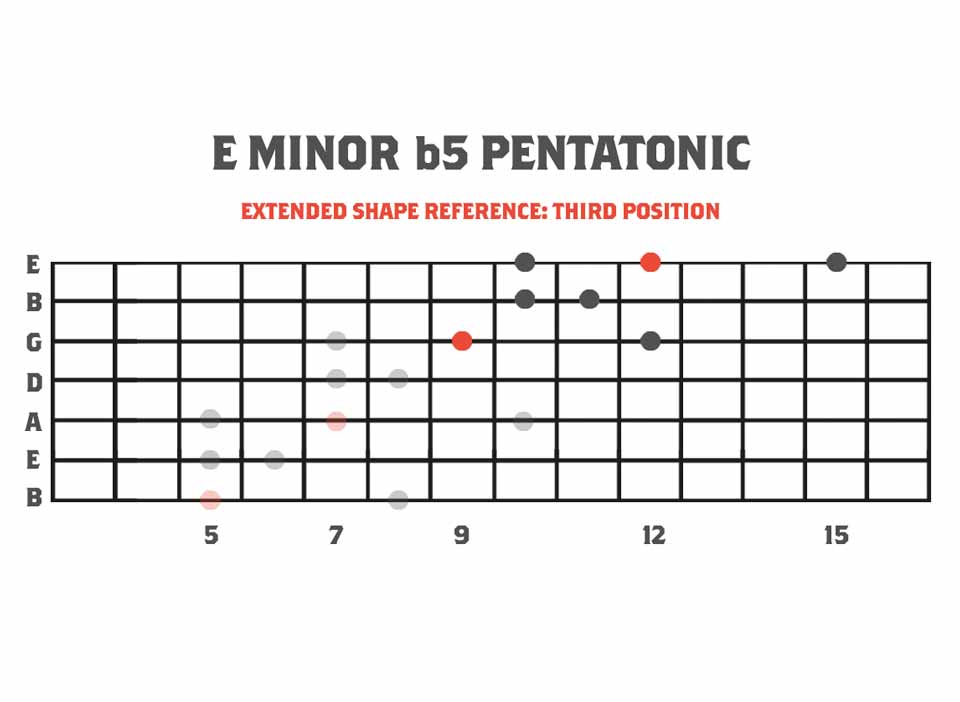
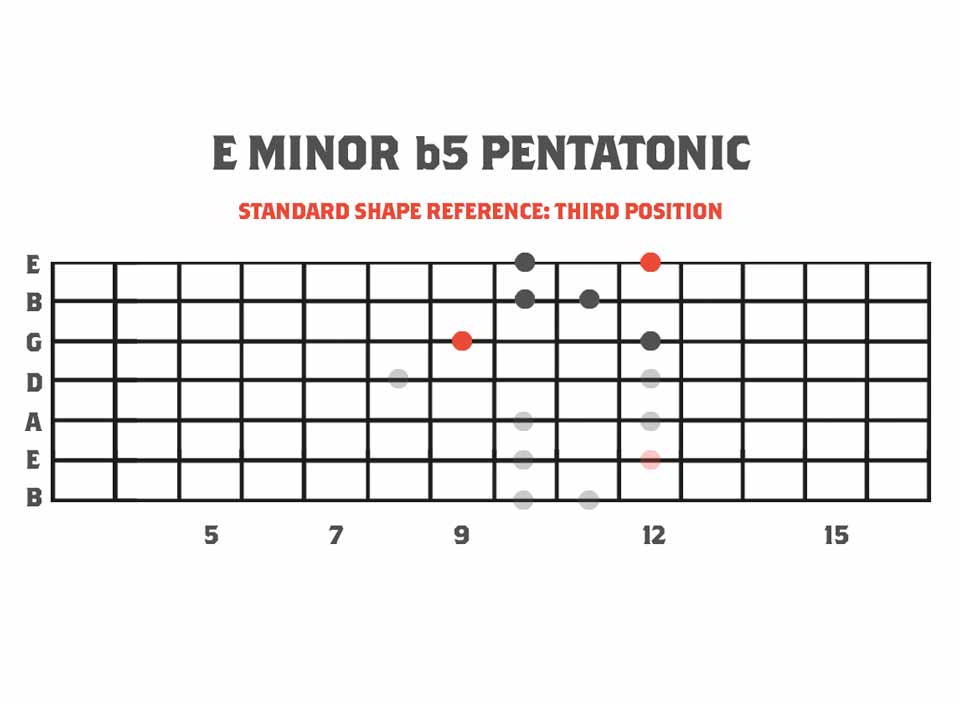

If you’ve made it this far, awesome! You’re levelling up! We’ve covered a lot of advanced concepts and ideas here so you should be feeling pretty worked out by know both physically & mentally. Now go and use this new found knowledge to unleash some awesome new licks and ideas in your playing.

Download The eBook – Become A Strings of Rage™ Syndicate Member!
We’ve compiled this lesson into a full length scale study book & extended resource that contains all the diagrams, theory and tab from this lesson. Our book covers all the chords from melodic minor, many applications for these unique pentatonics as well as some practical chord progressions to use this scale in your playing. Covers both 6 and 7 string guitar.
Head over to our Patreon page and join one of our Strings of Rage™ Syndicate Membership tiers to unlock. All memberships help us to create better quality lessons and are helping us to craft a unique online learning experience. Thanks for the support!


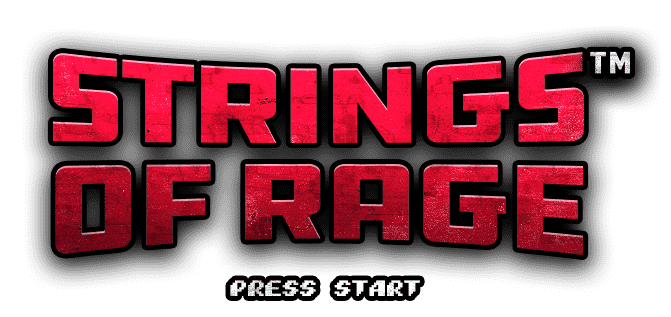
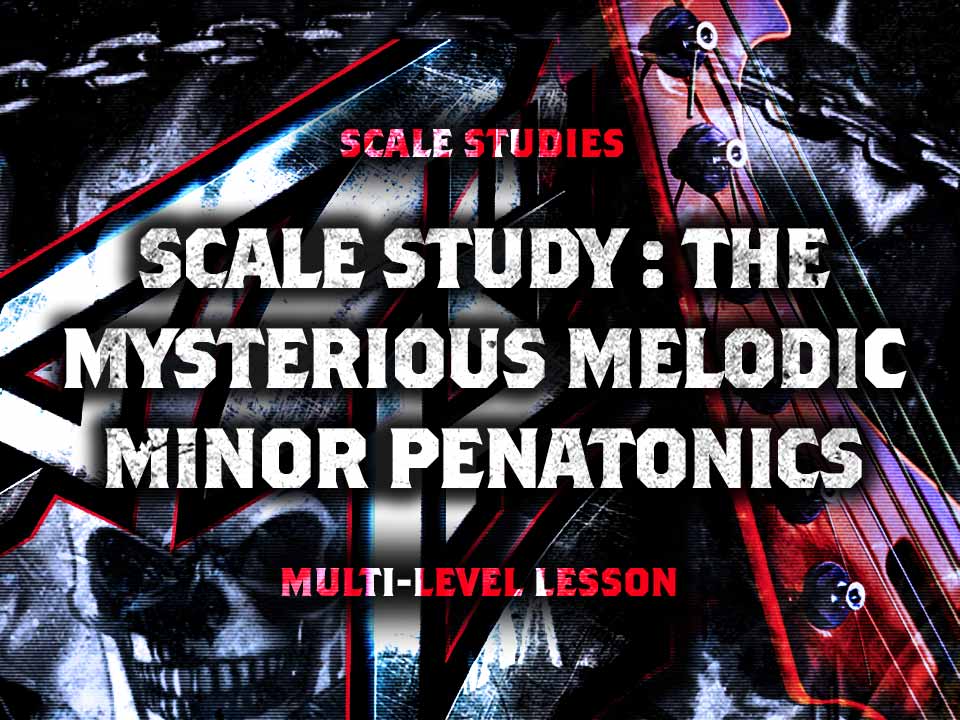
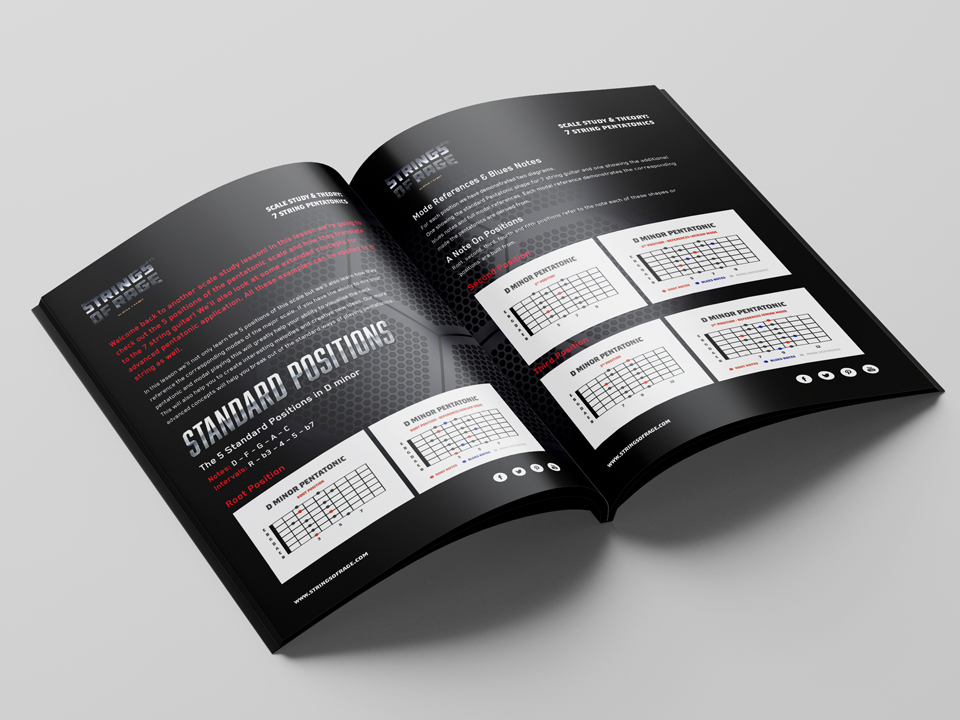
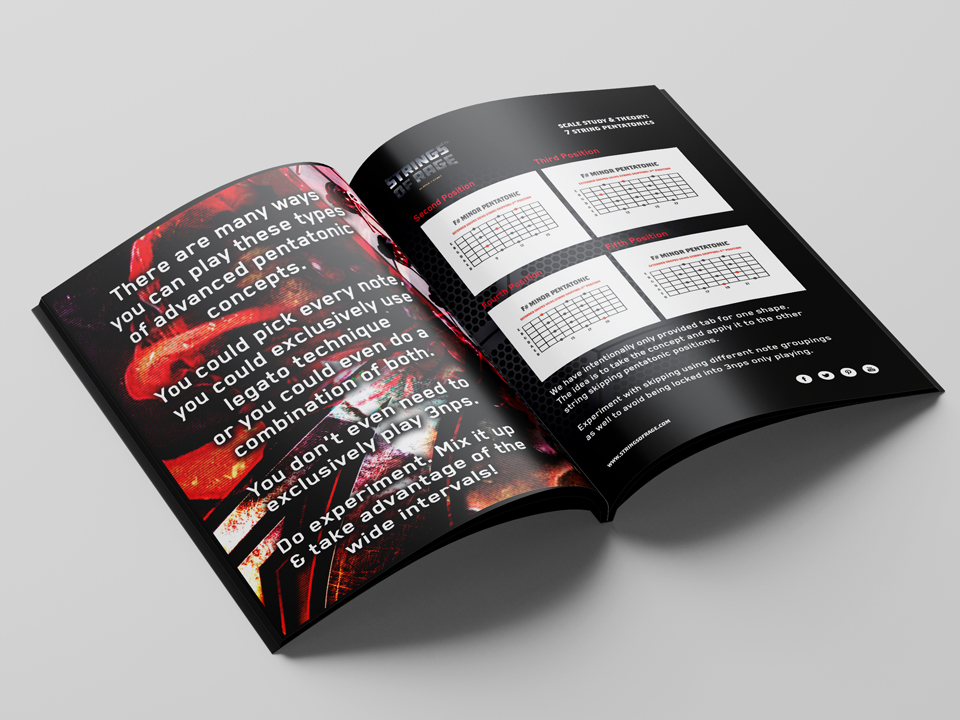
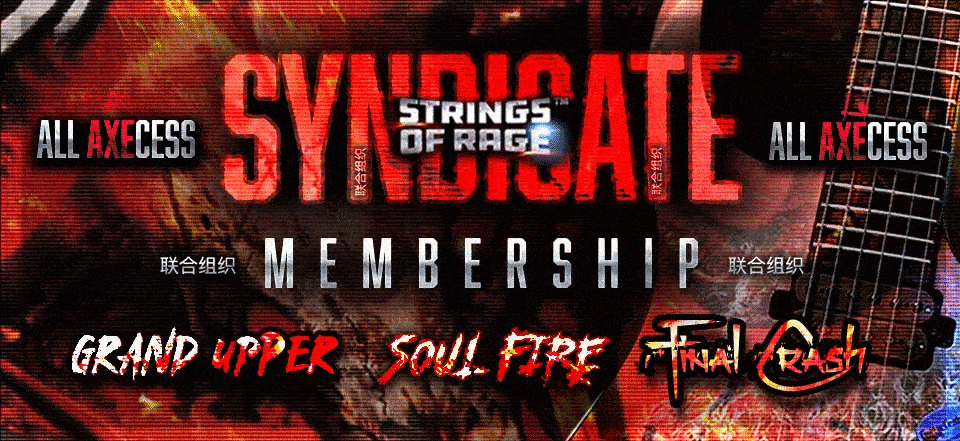
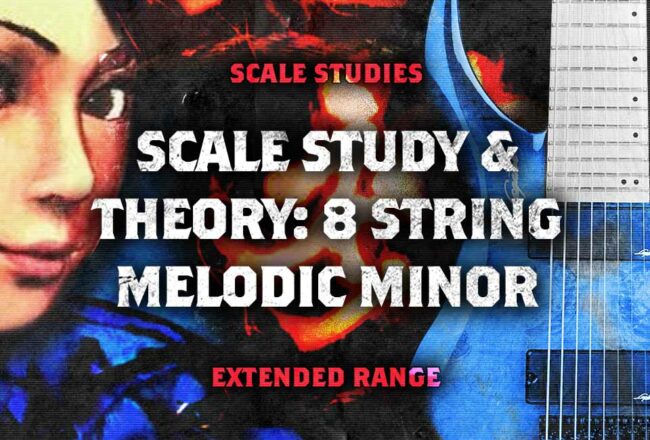
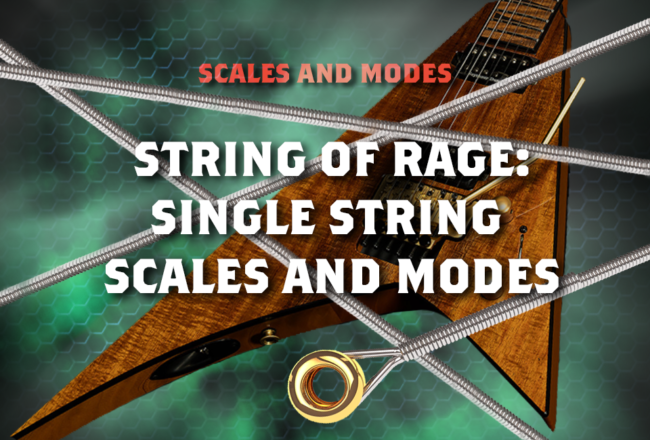
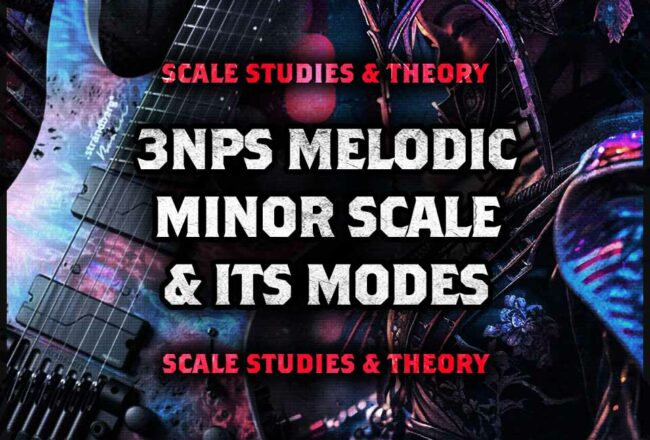






No Comment